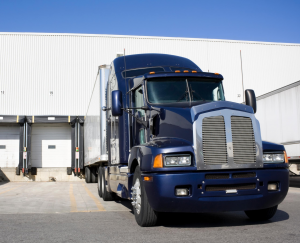
According to the Bureau of Labor Statistics, in 2019 the median Heavy and Tractor-Trailer truck driver salary was $45,260 annually or $21.76 per hour. That said, your truck driver salary will be very different depending on your type of run, haul, and location, among other factors. For bigger companies, you may be able to look up their average salaries. Unfortunately, that’s less likely to be available for smaller companies. But, even without company-specific numbers, you can get a sense of how your salary stacks up. Read on to understand different types of income and whether your salary is competitive.
Consider the Factors
Type of Haul
You can’t compare your salary to the industry average without thinking about the type of haul. Typically, car transport drivers and heavy equipment transporters are some of the highest paid jobs. Hauling highly valuable goods tends to come with an increase in paycheck because these drivers need a high level of performance. On the other hand, straight truck local trucking often brings in one of the lowest salaries in the industry. This recreated chart from Trucker’s Training gives a few examples of salary across CDL A haul types.
Trucker Job
|
Median Pay
|
Reported High Income
|
| Ice Road Trucking |
$40,000 |
$210,000 |
| Heavy Equipment Transporter |
$60,000 |
$150,000 |
| Car Transport Driver |
$73,000 |
$120,000 |
| Dry Bulk Grain Hauler |
$54,000 |
$120,000 |
| Refrigerator Trailer Drivers |
$52,000 |
$80,000 |
| Intermodal Trucker |
$48,000 |
$72,000 |
| Flatbed Tractor Trailer Drivers |
$48,000 |
$72,000 |
| LTL Line-Haul Trucker |
$48,000 |
$72,000 |
| OTR Freight Trucker |
$48,000 |
$62,000 |
Remember, there are plenty of other factors on truck driver salary. So, even within a haul type, there can be a lot of variety in pay.
Type of Run
Whether you’re a “local runs only” driver or an “OTR for life” driver can make a big difference in pay. There will be variation in pay by company and other factors, but in general, OTR drivers have the highest salary potential. According to current Zip Recruiter data, OTR drivers in the United States average $63,888 annually. Regional drivers get the next highest paycheck and earn an average of $60,969. Finally, local drivers in the United States earn an average of $51,355 each year.
Keep in mind that Type of Run is just one piece of the puzzle. There are some local jobs, such as HazMat Tanker jobs, that will out earn OTR positions. Endorsements, haul type, company size, and more all contribute to earning potential.
In addition, there’s a lot to consider beyond money. If you’re raising a family or want to have weekends off, Regional or local jobs might be a better fit for you. Type of run is also just one of many factors that will influence truck driver salary. Choose the run type that fits your lifestyle, and then consider how you can meet your salary needs.
Factor in Experience
As with many jobs, seniority matters in many trucking companies. Based on 2020 data from Trucker’s Training, new drivers can expect to earn between 27 and 40 CPM after training. In general, that rate continues to increase with more time on the job. In other words, more experience brings a higher truck driver salary. That financial boost may come as a raise from your current company. Some employers reward drivers for loyalty.
Experienced drivers also are often more competitive for higher paying jobs. Remember, building a strong reputation is part of having more experience. A potential employer may call your current or former boss. Having a good recommendation as a skilled, reliable driver is a huge benefit in a competitive hiring pool.
Small Company vs. Large Company
 The size of the company you work can have pros and cons. Pay tends to be a little lower in small companies, but they also offer a more personal environment. On the other hand, larger companies tend to pay more but may have a less family-like company culture. Think of the decision of company size as a sliding scale rather than black and white. You might have to make tradeoffs, but there is also plenty of middle ground.
The size of the company you work can have pros and cons. Pay tends to be a little lower in small companies, but they also offer a more personal environment. On the other hand, larger companies tend to pay more but may have a less family-like company culture. Think of the decision of company size as a sliding scale rather than black and white. You might have to make tradeoffs, but there is also plenty of middle ground.
Look at Income Potential Rather than Salary
The reality of a paycheck is that it adds up differently depending on where you live. $50,000 will feel like more money in Cleveland, OH than in Los Angeles, CA. When you look up the average salary for your type of driving, make sure you include location. You can look up average truck driver salary by state with this list from Seek Capital. Drivers in Los Angeles are likely to earn more annually than a Cleveland driver, but they will also spend more on daily expenses like a mortgage or rent and groceries.
According to Seek Capital, the top 3 states for truck driver salaries are Nevada, Mississippi, and Kentucky.
Maybe surprisingly, these aren’t the states where truck drivers earn the highest gross salary. Instead, they are the states where truck drivers earn significantly more compared to the average salary from other jobs.
How to Increase Your Salary Potential
If you’re not happy with your current truck driver salary, there are a few ways you can increase your earning potential. Some of these opportunities may be at your current job, and others will take a little time and training. Remember, whenever you change CDL jobs, get as many compensation details as possible from your recruiter before you pursue the position.
 Endorsements
Endorsements
Earning additional endorsements is a great way to give your long term income potential a boost. Getting more endorsements such as a Tanker, HazMat, Doubles, or Triples will take time and money. Consider this an investment in your future.
Maintaining current endorsements will qualify you for better jobs with higher salaries. Before you choose a program, consider what kind of jobs you want in the future. Then, pick a program that fits your financial needs and career goals.
Overtime Opportunities
If you are working an hourly job, overtime opportunities can be a good way to increase your salary. This is more frequently an opportunity for local driving positions than other run types. That does mean that you may have less free time on your hands, but overtime opportunities often pay very well. Some companies offer more than their regular rate for overtime hours. As a result, a few extra hours of overtime work might be worth the increased paycheck.

Bonuses
Trucking companies offer bonuses as an incentive for many things. Some are performance, safety, or mileage bonuses that come directly from your work. Others relate to the hiring process — referral bonuses, loyalty incentives, and sign-on bonuses.
Some of these, like a loyalty bonus, are tied primarily to time and aren’t necessarily driven by driver performance. However, others you may be able to increase with a strong professional performance. In addition, keep in mind other quality drivers whenever your company is hiring. A new driver referral bonus can benefit your paycheck and build your reputation by making a good recommendation.

Want to find a job that pays you well?
Drive My Way matches drivers with jobs based on their qualifications and lifestyle preferences.
Find a Job Today





 Many truck drivers start out learning to drive
Many truck drivers start out learning to drive 

 Driving a
Driving a 




 In addition to the technical skills you will learn, refrigerated truck drivers need to be excellent decision-makers and problem solvers. Because of the temperature control required for successful reefer runs, a breakdown can mean
In addition to the technical skills you will learn, refrigerated truck drivers need to be excellent decision-makers and problem solvers. Because of the temperature control required for successful reefer runs, a breakdown can mean 


 The size of the company you work can have pros and cons. Pay tends to be a little lower in small companies, but they also offer a more personal environment. On the other hand, larger companies tend to pay more but may have a less family-like company culture. Think of the decision of company size as a sliding scale rather than black and white. You might have to make tradeoffs, but there is also plenty of middle ground.
The size of the company you work can have pros and cons. Pay tends to be a little lower in small companies, but they also offer a more personal environment. On the other hand, larger companies tend to pay more but may have a less family-like company culture. Think of the decision of company size as a sliding scale rather than black and white. You might have to make tradeoffs, but there is also plenty of middle ground. Endorsements
Endorsements

 1. Home Time
1. Home Time 5. Excellent Work/Life Balance
5. Excellent Work/Life Balance 8. Loading and Unloading
8. Loading and Unloading City Driving
City Driving


 Stop pay is typically offered to drivers who will make multiple stops on their run. In general, stop pay does not include the initial or final destination. Like detention and layover pay, stop pay compensates for the time that drivers are not adding miles to their logbooks. More deliveries mean more time stopped and fewer miles. Stop pay helps make up the difference.
Stop pay is typically offered to drivers who will make multiple stops on their run. In general, stop pay does not include the initial or final destination. Like detention and layover pay, stop pay compensates for the time that drivers are not adding miles to their logbooks. More deliveries mean more time stopped and fewer miles. Stop pay helps make up the difference.  While base pay makes up the majority of a driver’s income, many people receive additional pay through bonuses. All companies choose their bonus structures a little differently. Some of the most common bonuses are for fuel, safety, and inspections. Many companies also offer
While base pay makes up the majority of a driver’s income, many people receive additional pay through bonuses. All companies choose their bonus structures a little differently. Some of the most common bonuses are for fuel, safety, and inspections. Many companies also offer 





